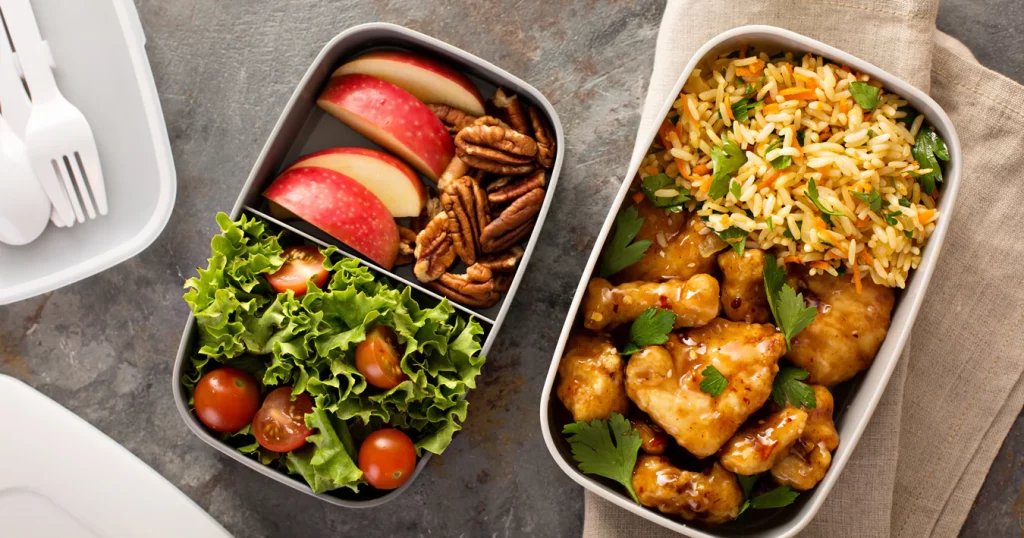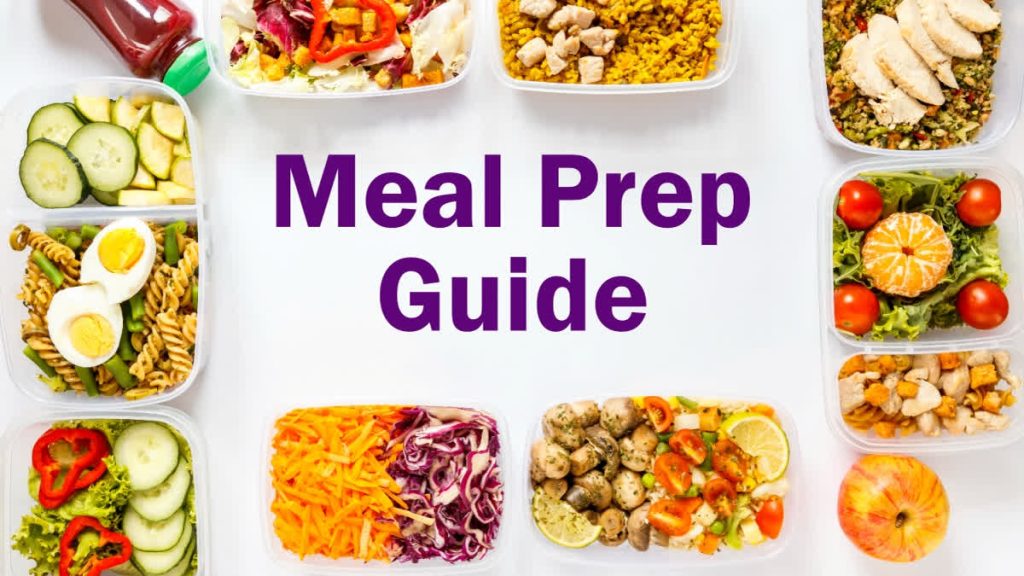You’re crushing it at work, but your nutrition is taking a backseat. Sound familiar? Between back-to-back meetings, tight deadlines, and that never-ending to-do list, finding time to eat well feels nearly impossible. You grab whatever’s convenient – a bag of chips from the vending machine, leftover pizza from the office lunch meeting, or that third cup of coffee as a meal replacement.
The good news? You don’t need to sacrifice your health for your career success. With strategic meal prep, you can fuel your body with nutritious foods that actually support your energy levels and keep you performing at your peak, all while saving time and money.
Why Meal Prep is a Game-Changer for Busy Professionals
Let’s be honest – when you’re running on empty, your decision-making suffers. That includes food choices. Meal prep eliminates the guesswork and removes the temptation to grab unhealthy options when hunger strikes and time is short. You’re essentially doing your future self a massive favor by preparing nutritious meals when you have the mental bandwidth to make good choices.
Beyond the health benefits, meal prep can save you serious money. Those daily lunch runs and dinner deliveries add up faster than you think. Most people spend between $12-20 per meal eating out, while a home-prepped meal typically costs $3-6. Over a month, that’s potentially hundreds of dollars back in your pocket.
The Busy Professional’s Meal Prep Strategy
Forget the Pinterest-perfect meal prep photos with 20 different containers. Your approach needs to be simple, sustainable, and scalable. Here’s the framework that actually works for people with demanding schedules:
The Power of Three: Focus on prepping three core components – a protein, a complex carbohydrate, and vegetables. Mix and match these throughout the week to avoid food boredom while keeping prep time minimal.
Batch Cook Smart: Choose one day per week for your prep session. Sunday works for many people, but pick whatever day gives you 2-3 hours of uninterrupted time. The key is consistency, not perfection.
Think Assembly, Not Cooking: You don’t need to create elaborate recipes. Simple, well-seasoned ingredients that you can combine in different ways will serve you better than complicated dishes that require specific reheating instructions.
High-Energy Breakfast Options
Starting your day with stable blood sugar levels sets you up for sustained energy and better decision-making throughout the morning. These breakfast options can be prepped in advance and grab-and-go ready:
Overnight Oats Variations: Combine rolled oats with Greek yogurt, milk of choice, and your favorite add-ins. Try combinations like banana and almond butter, berry and vanilla, or apple cinnamon. These keep in the fridge for up to four days and provide a perfect balance of protein, fiber, and healthy fats.
Egg Muffin Cups: Whisk eggs with chopped vegetables like spinach, bell peppers, and onions. Pour into muffin tins, add a sprinkle of cheese if desired, and bake. These protein-packed bites reheat beautifully and can be eaten with one hand during your commute.
Greek Yogurt Parfait Jars: Layer Greek yogurt with berries and a small amount of granola or nuts. Keep the crunchy elements separate until you’re ready to eat to maintain texture. These provide probiotics, protein, and antioxidants to fuel your morning.

Power-Packed Lunch Solutions
Lunch is often where good intentions go to die. You’re deep in work mode, time is limited, and the easiest option usually wins. These lunch ideas are designed to be satisfying, nutritious, and office-friendly:
Buddha Bowl Template: Start with a base of quinoa, brown rice, or mixed greens. Add a palm-sized portion of protein (grilled chicken, tofu, hard-boiled eggs, or beans), roasted vegetables, and a healthy fat like avocado or nuts. Make a big batch of each component and mix different combinations throughout the week.
Mason Jar Salads: Layer ingredients strategically to prevent sogginess. Dressing goes on the bottom, followed by sturdy vegetables like carrots and bell peppers, then grains or beans, leafy greens, and finally delicate items like avocado or cheese on top. When you’re ready to eat, just shake and enjoy.
Soup and Grain Combos: A hearty soup paired with a small portion of quinoa or brown rice creates a filling, warming lunch. Lentil soup, chicken and vegetable soup, or butternut squash soup all freeze well and provide excellent nutrition density.
Satisfying Dinner Options
After a long day, the last thing you want is to spend an hour cooking dinner. These options require minimal evening prep while delivering maximum nutrition and satisfaction:
Sheet Pan Meals: Combine a protein with seasonal vegetables on a single pan, drizzle with olive oil and seasonings, then roast everything together. Salmon with roasted vegetables, chicken thighs with sweet potatoes and Brussels sprouts, or tofu with broccoli and bell peppers all work beautifully.
Slow Cooker Success: Use your morning coffee brewing time to throw ingredients into a slow cooker. By evening, you’ll have a perfectly cooked meal waiting. Chicken and vegetable stew, beef and sweet potato curry, or vegetarian chili are all excellent options that improve in flavor over time.
Stir-Fry Components: Pre-cut vegetables and proteins during your weekend prep session. Store them in containers so you can quickly toss them in a pan with some oil and sauce for a fresh, hot meal in under 10 minutes.
Smart Snack Strategies
The 3 PM energy crash doesn’t have to derail your healthy eating goals. Having nutritious snacks readily available prevents impulsive vending machine visits and keeps your energy stable throughout the day:
Protein and Fiber Combos: Apple slices with almond butter, Greek yogurt with berries, or hummus with vegetable sticks provide sustained energy without the sugar crash that comes from processed snacks.
Portable Options: Hard-boiled eggs, mixed nuts, or homemade trail mix travel well and don’t require refrigeration. Keep portions pre-measured to avoid mindless overeating.
Time-Saving Prep Techniques
Efficiency is everything when you’re meal prepping with limited time. These techniques will help you maximize your prep session:
Invest in Good Containers: Glass containers with tight-fitting lids are worth the investment. They’re microwave-safe, don’t retain odors, and you can see what’s inside without opening them.
Cook Once, Eat Twice: When making dinner during the week, intentionally make extra portions. Tonight’s grilled chicken becomes tomorrow’s lunch salad protein.
Prep Vegetables First: Wash, chop, and store vegetables as soon as you get home from grocery shopping. This single step eliminates the biggest barrier to healthy eating during busy weekdays.
Use Your Freezer Strategically: Cooked grains, soups, and even some prepared salads freeze well. Having backup meals in your freezer prevents last-minute unhealthy choices.

Making It Sustainable
The biggest meal prep mistake busy professionals make is trying to do too much too soon. Start with prepping just one meal per day – maybe lunch since that’s often the most challenging. Once that becomes routine, add breakfast or dinner to your prep routine.
Remember, consistency trumps perfection every time. A simple meal that you’ll actually eat is infinitely better than an elaborate creation that sits untouched in your fridge. Your meal prep routine should feel like a helpful tool, not another overwhelming task on your already full plate.
The goal isn’t to become a meal prep perfectionist – it’s to create a sustainable system that supports your health goals while respecting your time constraints. When you consistently fuel your body with nutritious foods, you’ll find that you have more energy for the things that matter most to you, both inside and outside the office.
Your career success and your health don’t have to compete with each other. With a little planning and the right strategies, you can excel in both areas. Start small, stay consistent, and watch how proper nutrition amplifies your professional performance.
